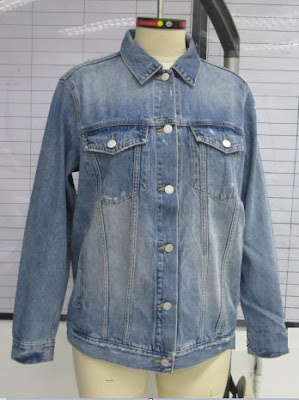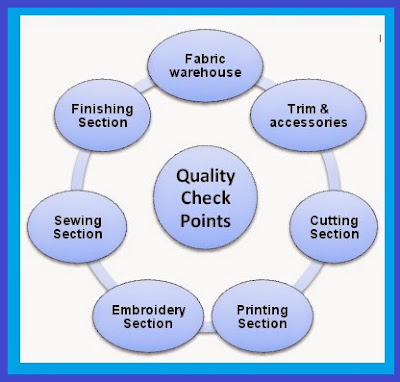Step How to Setting QC and QA Garments
At the end consumer level (garment buyers for use), they
will choose the best garment quality. So, to have satisfied customers,
retailers must prepare or display garments in their stores with quality
products. Usually when retailers buy goods wholesale to market, they
have a guaranteed purchase with a garment distributor.The guarantee is in the form of replacement of defective
goods or if there is no substitute for defective goods, they will be exchanged
for money. In this case the producer will incur high production costs
and the producer will get a claim from the buyer. If the level of damage is
high enough, the buyer will stop buying from the producer. So, the manufacturer takes care of the garment quality at
each stage of production. In the maximum case the buyer checks the shipment at
the factory before receiving the finished clothes. Whatever defects are found in the final inspection (final
inspection) is a series of previous processes. So, it is very important to repair garment defects in the
process where the problem occurs and not in finishing.
What if found defects in garment? Many people and machines are involved in producing
clothing, and there is a clear opportunity to make some clothes damaged in the
production process due to machine damage or human error.
Broken garments can be repaired by repairing or changing
defective parts.But repairing defective goods requires money and time and
electricity costs. These two things increase the inefficiency of the company. If there is a work error or garment damage at the beginning
of the production process is not immediately repaired then the consequences
will be more difficult to repair when the garment is ready.
The production process begins after receiving the fabric
and ends after the garment is packed for shipment, Generally, garment export
factories place quality check points at the end of each process to ensure that
only quality garments move to the next process.
Causes and solutions:
The QC (Quality control and QA (Quality assurance) check
points are as follows;
1. Fabric warehouse: Every of the fabric incoming must be
10% inspected if a large number of defects must be 100% inspection
2. Trim & accessories: Every incoming of Trims must be
inspected by QC Trims & accessories
3. Cutting Room
- Must have QC inspection for Markers
- Must have QC inspection for fabric cut audits
- Must have QC inspection for Bundle inspection
4. Printing and Embroidery
- Must have 100% QC inspection from the printing panel.
- Must have 100% QC inspection of embroidery
5. Sewing dept
- Must have Inline QC check and check point (on critical operations)
- Must have a QC checking random piece checking (QC checking by random)
- Must have end-line QC check pieces by pieces
6. Must have QC
inspection (After pressing process)
7. Must have a final
initial QC inspection after washing
8. Must have QC
check Finishing
9. Must have internal QA inspection random check before
shipment
Flow Chart
You May Also Like:
- How to use Acceptable Quality Level (AQL)
- Container Loading Check
- Carton Drop Test Check
- Electronics Inspection
- During Furniture Inspection
- During Hard-Lines Inspection
- Preshipment Inspection Furniture
- Furniture and Rattan Inspection
- How to Step use Moisture Content (MC)
- How to check Moisture Content (MC) wood
- Pre-Shipment Inspection Hardlines and Softlines




Belum ada Komentar untuk "Step How to Setting QC and QA Garments"
Posting Komentar